Jerusalem's Old City is home to the most sacred Jewish site in the world, the Western Wall, also known as the Wailing Wall and the Kotel. This important religious, and historic site is among the top attractions of Jerusalem. Virtually every Jerusalem tour includes a stop at the Kotel.
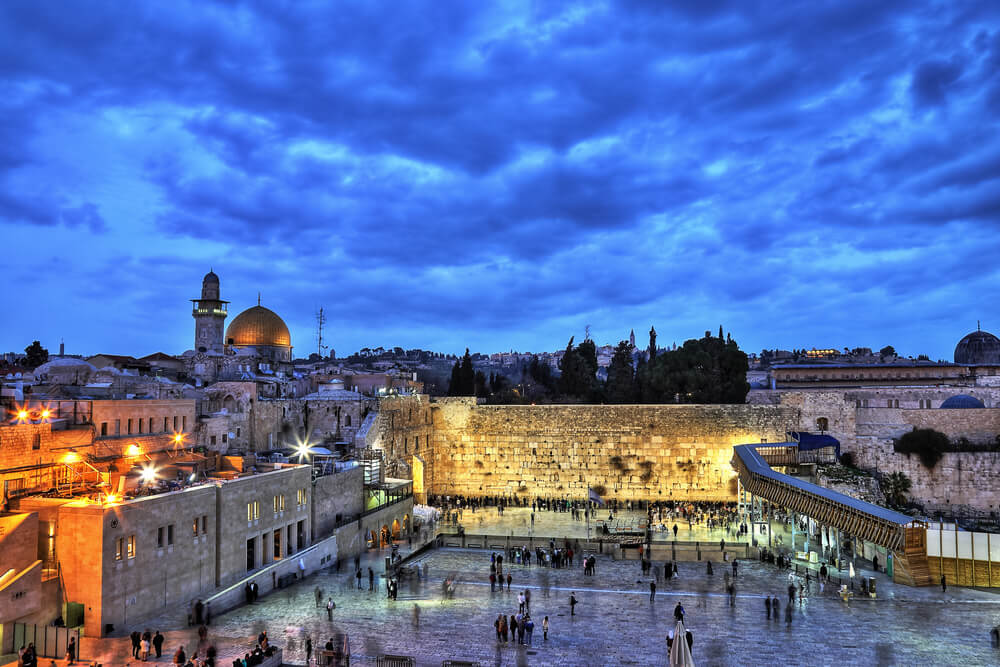 The Western Wall in the evening
The Western Wall in the evening
Although it is a Jewish landmark, the Western Wall is open to people of all faiths who are willing to respect the traditions of the site.
Pro Tip: It is best to visit the Kotel dressed in modest attire such as a dress or pants that cover your knees, and a top that does not reveal too much of your shoulders or cleavage. Men will find paper skull caps provided but they should also avoid visiting the Kotel in shorts, vests, or tank tops.
According to historical records, religious scriptures, and Jewish tradition, the Temple Mount was the site of several biblical events and the place where the First and Second Temples once stood.
The Western Wall is the last remnant of the Second Temple which was destroyed in 70AD. If the Temple still stood on Temple Mount, Jews would worship there, and it would be the most sacred Jewish site in the world. But as the Temple did not survive, all Jews have left is the one remaining wall, the Western Wall.
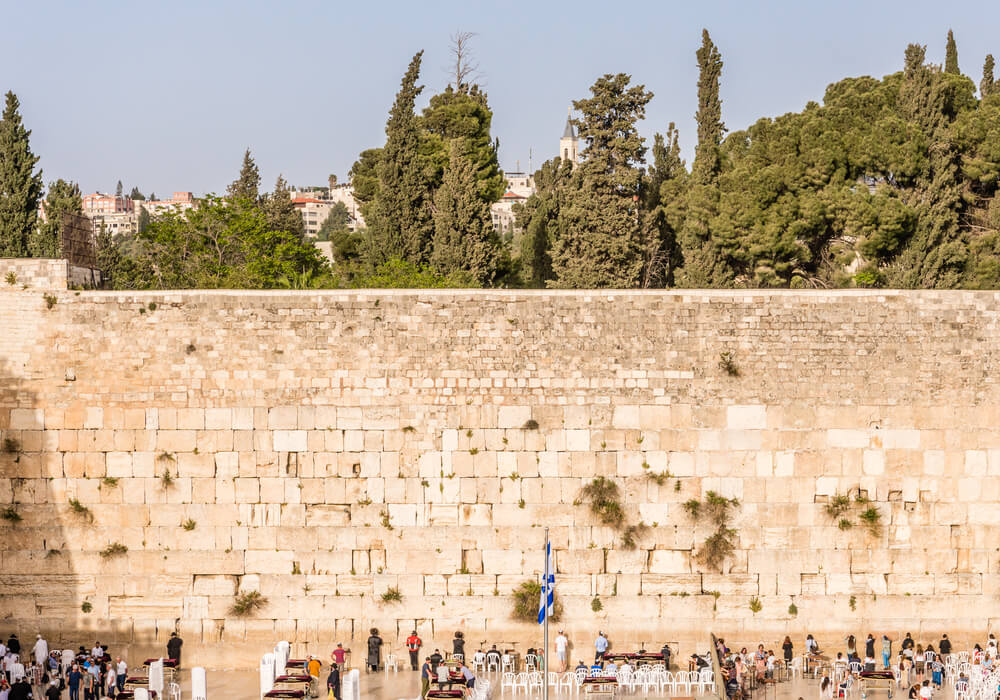 The Western Wall in all of its glory
The Western Wall in all of its glory
In the Jewish Talmud, it is written that the Temple on the Temple Mount held the Foundation Stone, where the world was created. Jewish tradition holds that the Temple Mount was where Abraham bound Isaac. Across the globe, Jews face the Temple Mount when they pray. All of these factors make the Temple's only surviving wall a sacred site. The Western Wall performs the important function of keeping the memory of the Holy Temple alive.
Pro Tip: The best place to get a photo of the Western Wall is from the top of the stairs that lead up to the Jewish Quarter. Here You can get a shot with the Dome of the Rock above the wall.
Visitors approach the Western Wall from the Western Wall Plaza, a large open space facing the wall. The wall itself was built with massive blocks of limestone. It is about 50 meters long and reaches a height of 19 meters above ground with 28 layers (courses) of stone from various historic periods. The lower rows of stone date back to the original Second Temple.
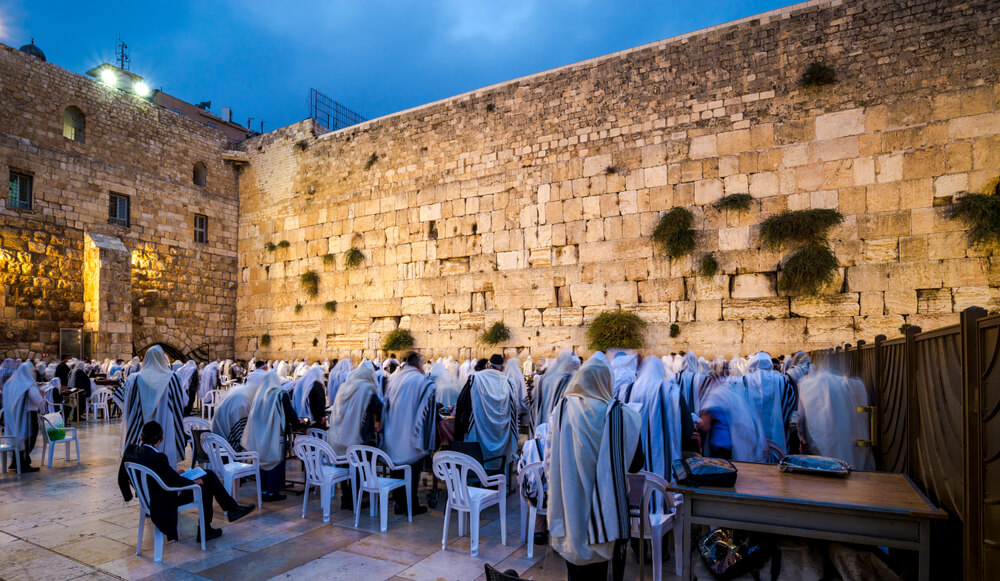 Religious Jews praying at the Western Wall
Religious Jews praying at the Western Wall
Expect to see throngs of people at the Kotel. You can go right up to the wall and touch it. You can even place a prayer note in the cracks between the large stones.
Pro Tip: Take a piece of paper and a pen with you. When you leave the wall, walk backward for a few steps before turning your back on the wall. This is a custom to show respect for the site.
A partition divides the wall into two sections, one for women and one for men. This is because Jewish tradition holds that members of the same sex are prohibited from praying together. Pro Tip: Recently, a mixed prayer area was approved by Robinson’s Arch close to the plaza, where men and women can pray together. There has been a lot of controversy over this area, so depending on the political atmosphere this place may or may not be operating when you visit.
The section of the wall that you see above ground is not all that remains of the Western Wall. Beneath ground level, the wall continues, and archaeologists have excavated sections of it that can be seen in the Western Wall Tunnels.
King Solomon built the First Holy Temple on Temple Mount (also called Mount Moriah) in 957 BC and it stood until 587/586 BC. The Second Temple was built in its place in 516 BC. The temple stood until it was destroyed by the Romans in 70 AD. The temple held the Holy of Holies, the inner sanctum of God’s Tabernacle, and the place where, according to rabbinical law, a divine presence still presides. It was here that the Arc of the Covenant was kept.
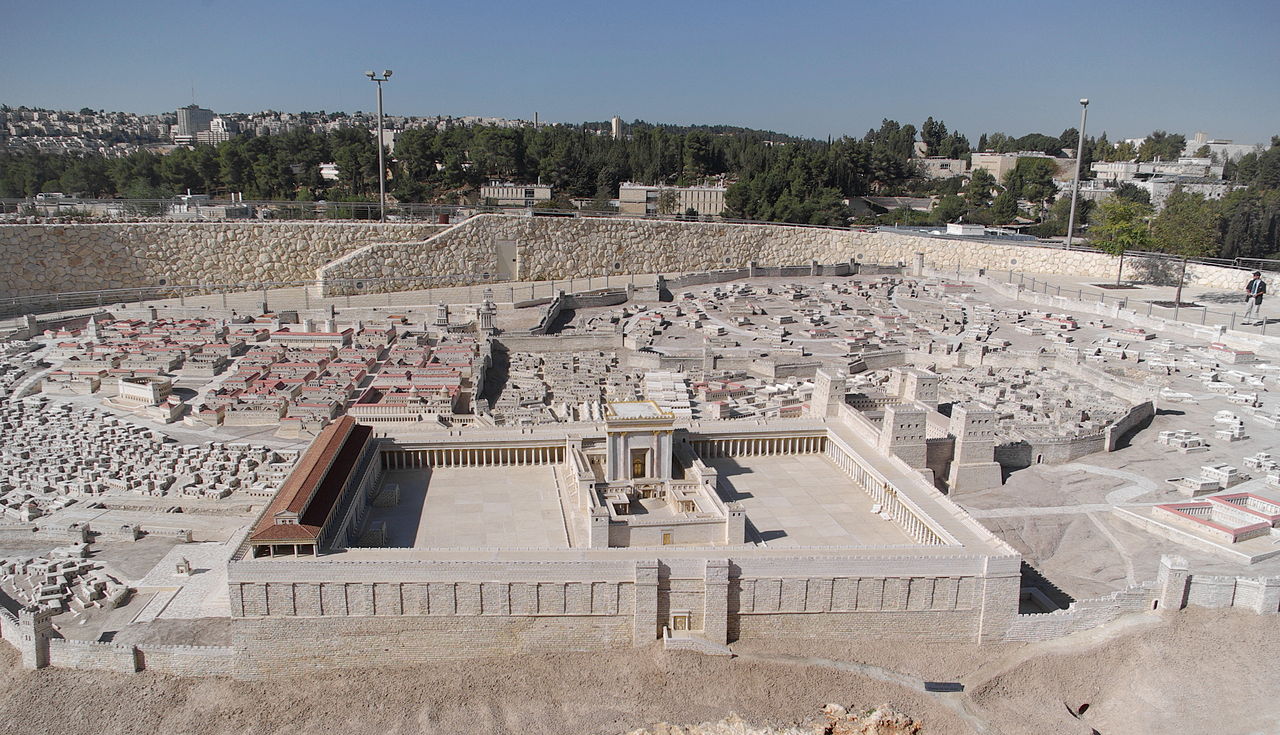 A model of the Jerusalem Great Temple (Image source: Berthold Werner)
A model of the Jerusalem Great Temple (Image source: Berthold Werner)
The only part of the temple to survive the Roman destruction of the Second Temple in 70 AD was part of the retaining wall, on the mount’s western slope. The retaining walls had been added by King Herod in 20BC when he expanded the temple. As the only part of the temple that could still be identified it was natural that Jews would consider it sacred and the nearest thing they had to the actual temple.
Later during the Byzantine Era Jews were forbidden from entering Jerusalem so they would pray on the Mount of Olives, overlooking the Temple Mount. After the Muslim conquest in the 7th century they were once again permitted to enter the city and approach the only remaining part of their temple, the western retaining wall.
In the centuries that passed Jews were periodically able to enter Jerusalem and pray at the Western Wall and there were other times when they were forbidden from entering the holy city. The Ottomans took over Jerusalem in the 16th century and the leader Suleiman the Magnificent recognized the right of the Jews to pray at the Western Wall. He had an area of about 4 meters wide and 28 meters long cleared alongside the wall giving the Jews ease of access to the wall.
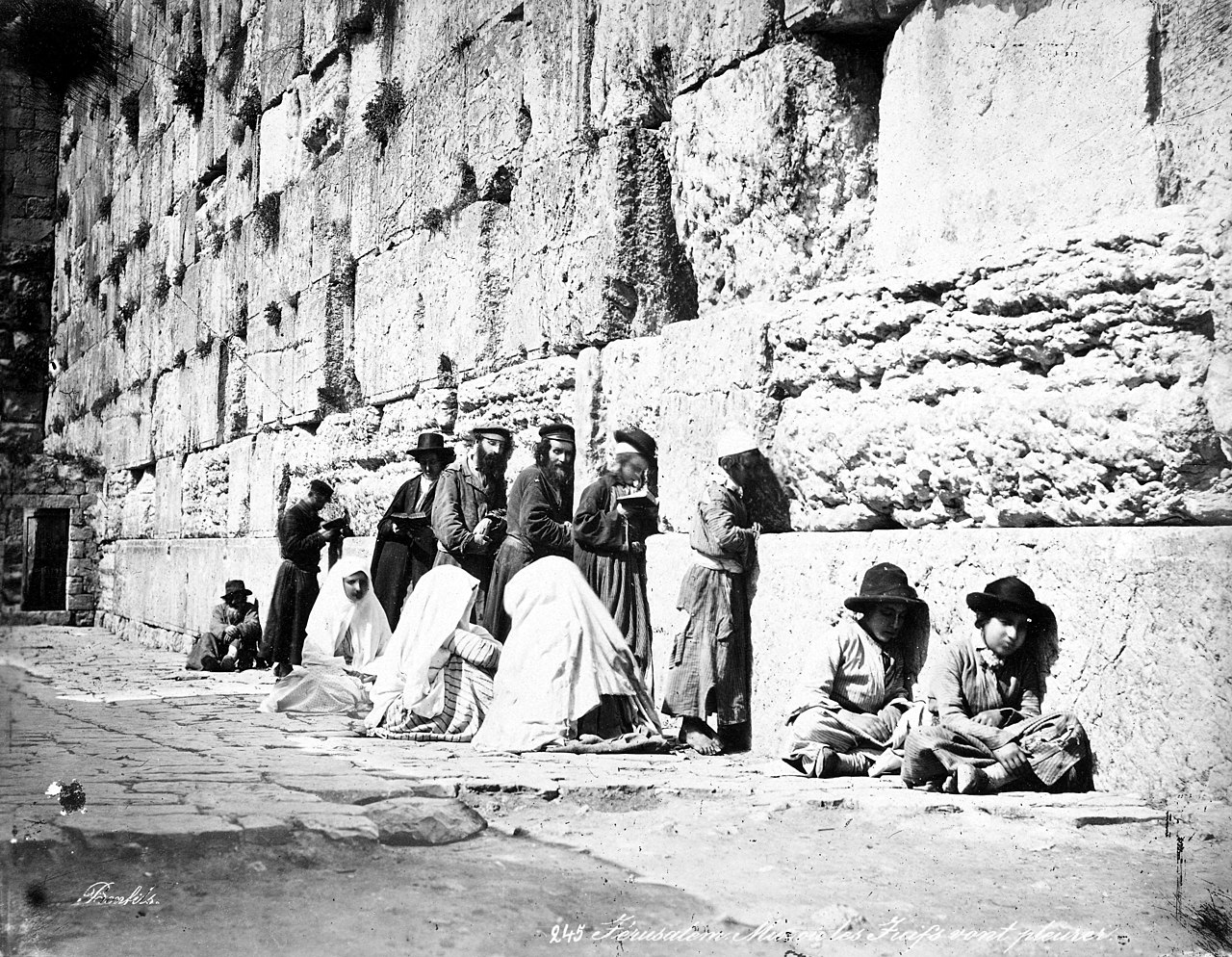 The Western Wall in 1870 (Image source: Félix Bonfils)
The Western Wall in 1870 (Image source: Félix Bonfils)
From 1917 to 1967 the British controlled Jerusalem. They agreed to uphold the existing status quo at religious sites but then in 1947, the British closed off access to the wall together, and the Old City was held by Arab militias. During the War of Independence in 1948 Jordan gained control of the Old City, and for the next 19 years, Jews could not pray at the Western Wall.
In 1967 Jerusalem was liberated during the Six Day War, and the Western Wall fell under Israeli jurisdiction. There is dramatic historic film footage of the moment when Israeli troops reached the Western Wall for the first time.
The then-Defence Minister Moshe Dayan placed a note with a prayer for peace on the wall. Perhaps this is where the tradition comes from, but it could also be from the Kabbalistic teaching that says all prayers ascend to heaven from the Temple Mount.
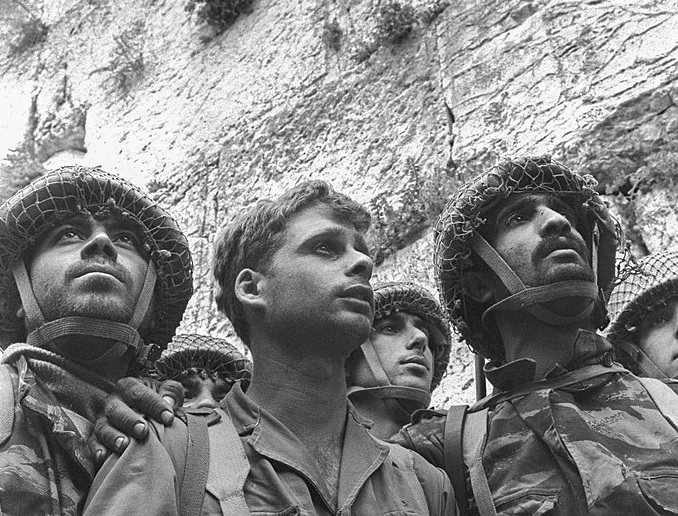 Israeli Paratroopers during the liberation of the Old City, under the Western Wall
Israeli Paratroopers during the liberation of the Old City, under the Western Wall
There was no Western Wall Plaza at the time, just a narrow alleyway that stretched alongside the Kotel in the Muslim Mughrabi neighborhood. After the war, the area was cleared (which became a controversial issue) and the open area in front of the Kotel was expanded to cover 56 meters.
Approach the Kotel and go right up to the wall. You can simply stand there soaking up the spiritual atmosphere, or you could pray or place a prayer note in between the stones.
Pro Tip: There are free, clean public toilets on the left-hand side of the Western Wall Plaza.
In addition to the famous exposed section of the Western Wall, two other smaller parts of the Western Wall can be seen - the Southern Section of the Western Wall and the Small Western Wall (HaKotel HaKatan) as well as the subterranean section in the Western Wall Tunnels.
During the Second Temple Era, a shopping street ran alongside the wall that we know today as the Kotel. But during the temple’s destruction, stones and rubble were thrown down onto the street, hiding it from view for centuries. Since 1967, excavation of the area has revealed several treasures, including parts of the southern Temple Mount retaining wall. It is now preserved in the Southern Wall Archaeological Park adjacent to the Dung Gate. Pro Tip: Visit the Davidson Center, which is part of the park, and has multimedia presentations and explanations about the site's history.
About 170 meters north of the Western Wall Plaza, a narrow alleyway near the Iron Gate that leads to Temple Mount, is the Small Western Wall. It is a continuation of the famous Western Wall and stretches for about 17.7 meters. The space in front of this small section of wall is just 4.2 meters wide. It is directly opposite where the Holy of Holies would have been if the temple was still standing on Temple Mount. Pro Tip: If you want a quiet moment at the Kotel, then the Small Western Wall is probably your best bet.
Another way to get a deeper understanding of Kotel and see it from a unique viewpoint is to tour the Western Wall Tunnels. The entrance is to the left of the Kotel and leads you down, below ground where you can see excavated remnants of the ancient city and a course of stones belonging to the Western Wall. These stones are the largest stones on the wall and the closest to the sacred site on Temple Mount. The Western Wall Tunnels are also home to the Chain of Generations Center.
Tours You May Like